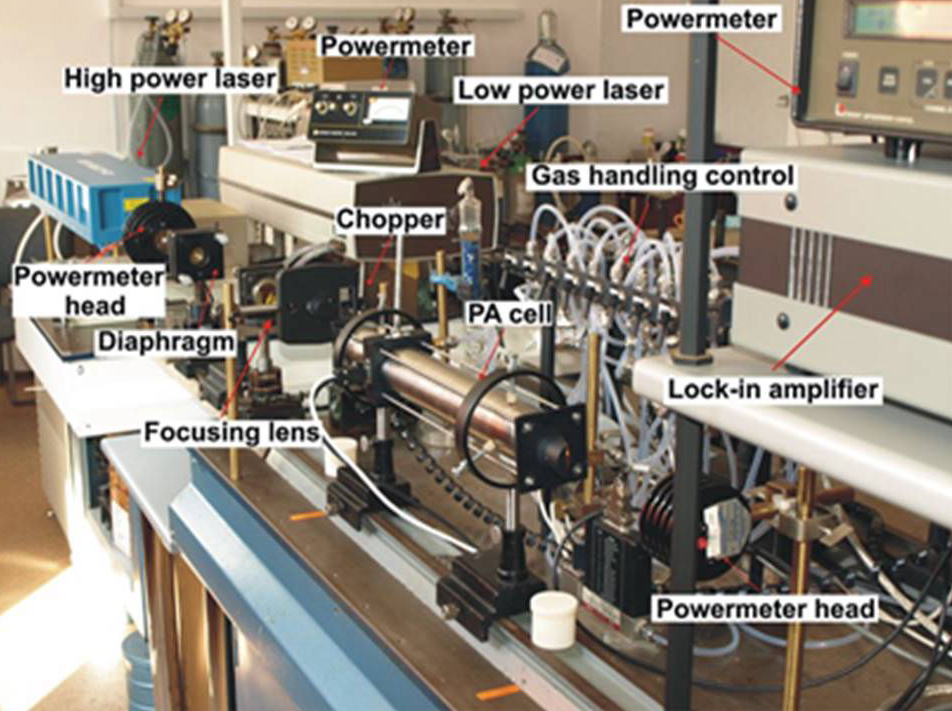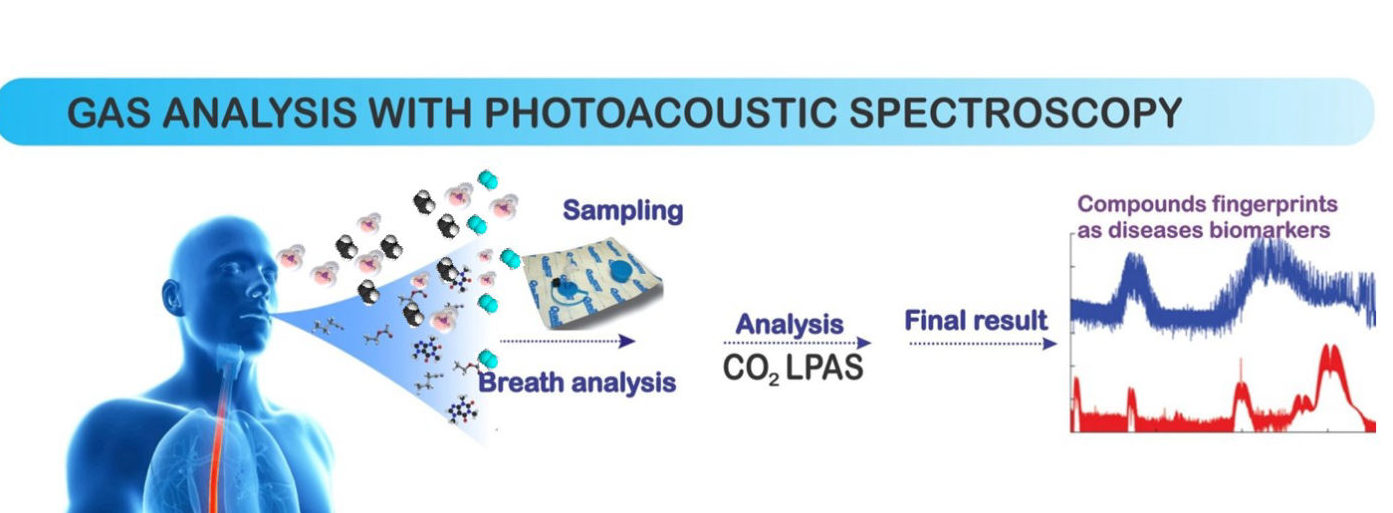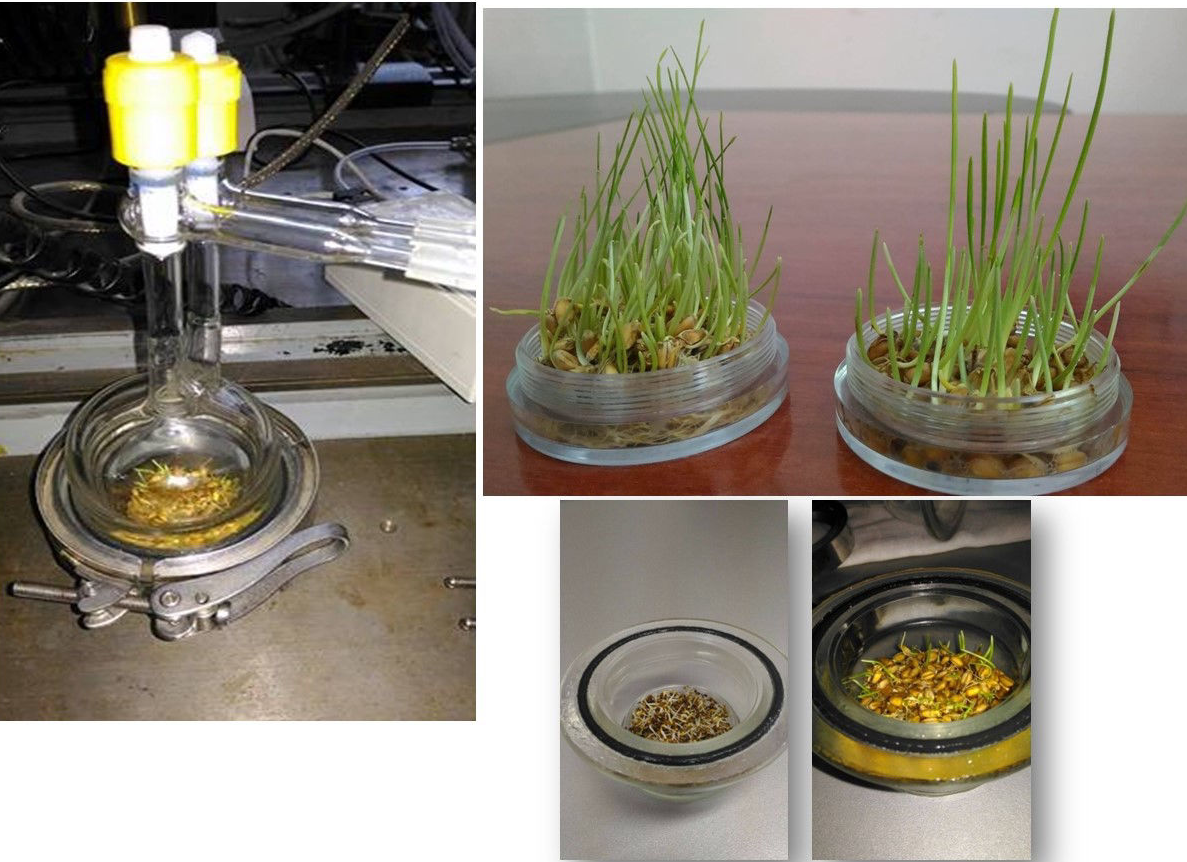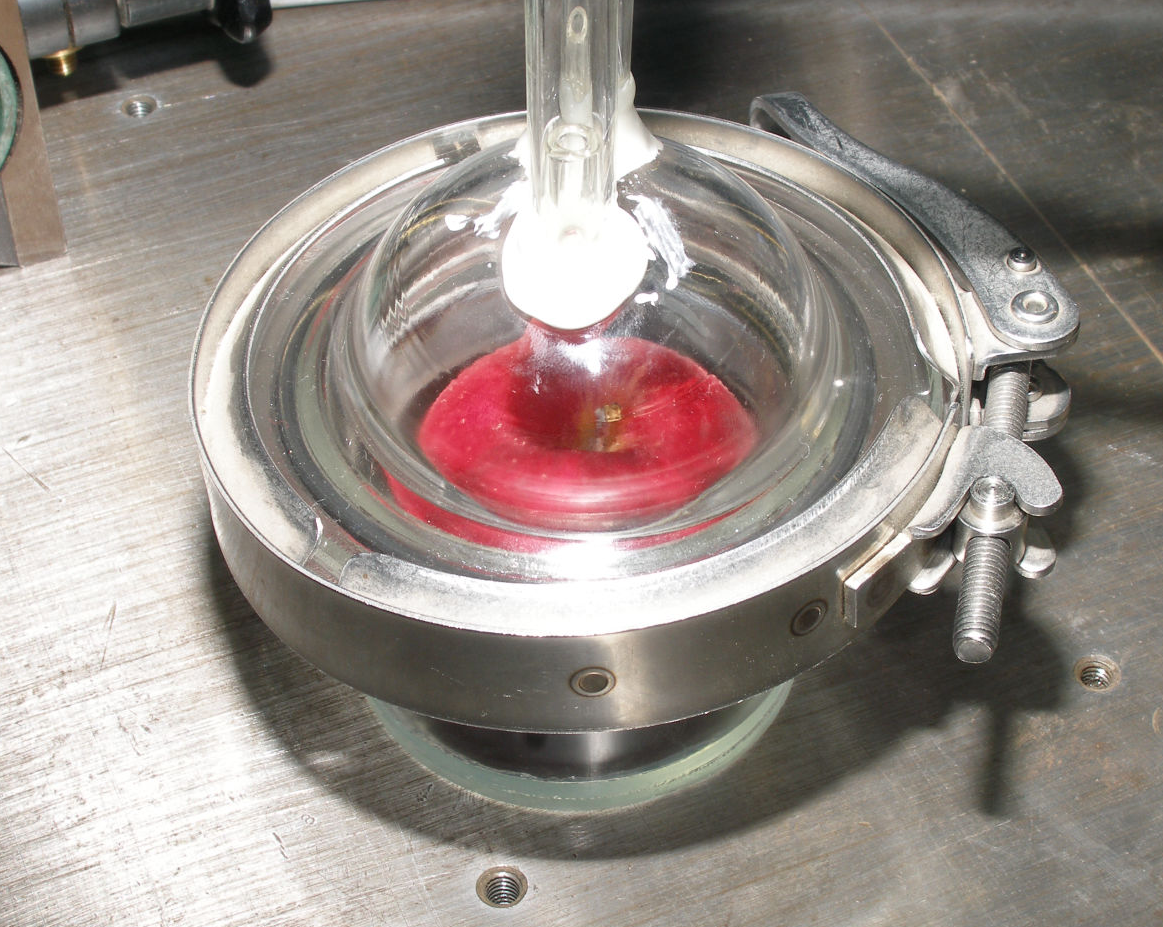

The analysis of human breath for (early) diagnosis of diseases is a promissing emerging technique, with direct application in areas such as public health and quality of life improvement. In clinical medicine, breath testing is the least invasive of all diagnostic tests, presenting minimal risk and negligible discomfort to patients.
Trace gas analysis of the breath composition gives information about various processes occurring inside the human body. For example, lipid peroxidation is of major interest as the free radicals induce an oxidative degradation of the polyunsaturated fatty acids, causing cell damage and cell death. In normal situations, free radical formation and antioxidants are balanced. However, under certain conditions (e.g. UV radiation, ionising radiation (X-ray) trauma, pulmonary and skin diseases, heart failure, diabetes, mental disorders, cigarette smoke, etc.) this balance is disturbed. The levels of ethylene (C2H4) are an indicator of lipid peroxidation in humans.The ammonia levels in human breath can serve for determining the exact amount of time- per session- needed for attaining an optimal dialysis for a patient with end-stage renal disease.

Molecular gases of environmental interest can be identified and measured quantitatively (ethanol, methanol, carbon dioxide).
Other potential applications refer to the detection of explosives and to the analysis of surgical smoke, known to contain gases such as acroleine, acetonitrile, ammonia, benzene, ethylene, methanol, toluene.

Ethylene acts as a vegetal hormone produced by all plant tissues and it is transported by diffusion through the plant tissues, increasing the plasmatic membrane permeability and having multiple effects on the cell metabolism. More specifically, it enhances the oxidative processes, facilitating the transport inside the cells and the biodegradation of the organic acids and chlorophyll, therefore playing a major role in many metabolic processes.